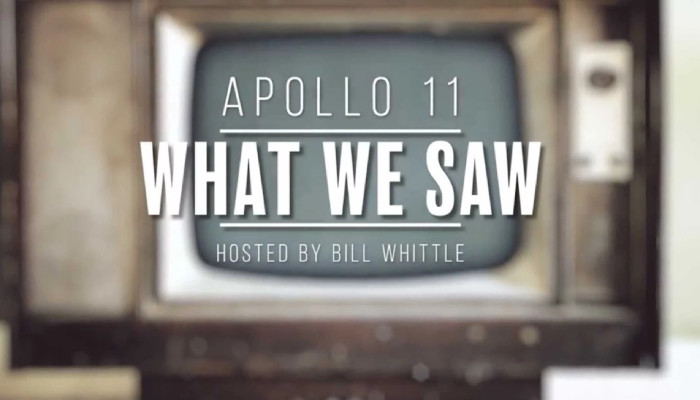
Last week, I found an example of storytelling at its finest. Apollo 11: What We Saw, is the story of the space race, told from the viewpoint of a 10-year-old Bill Whittle, yet narrated by his 60-year-old self.
I caught myself grinning from ear-to-ear with each episode of this four-part miniseries, because I feel part of it. I was six years old when Apollo 11 landed on the moon, almost seven for Apollo 13, and about seven-and-a-half on the final flight of Apollo 17. Both Bill and I had G.I. Joe Mercury Capsules, astronomy telescopes, and we experimented with model rocketry. I chose a career in engineering because of the space program.
Apollo 11: What We Saw comes in two flavors: YouTube video or audio-only. Subscribe to the audio version. Period. While its interesting to see 50-year-old grainy visuals interspersed with Bill talking into a studio mic, they detract from Bill’s ability to play in the theater of your vivid mind.
One of the best ways to learn storytelling is to study the works of others. So, when I find something that works, I like to go card-by-card through the StoryHow(TM) PitchDeck to see the storyteller used Roles, Events, Influences, and Techniques.
Take a look at my analysis, listen to the podcast, and then create your own. How do our lists compare?
A StoryHow analysis of Apollo 11: What We Saw
ROLES:
1. Audience: People interested in the space program and the 50th anniversary of Apollo 11
2. Protagonist: USA
3. Antagonist: USSR
4. Minor Characters: Hundreds of thousands of people, from the President to the custodians who all played a part in this technological achievement
5. Time: Time is a minor antagonist character as the USA races against it
6. Setting: 1960s Cold War America…and the moon
7. Mirrors: Astronauts and Cosmonauts
8. Deceiver: Mostly politics between the USSR and USA. The USSR is trying to win the culture war by continuously winning firsts and the Americans downplaying the significance
9. Catalyst: The Cold War
10. Pawn: Astronauts, who were the fearless warriors at the tip of the proverbial spear,
11. Fatal Flaw: The pressure to sacrifice safety to be first
12. Superpower: The astronaut’s ability to stay calm during catastrophes that not only saved their lives, but saved the entire program
13. Mentor: Wernher von Braun
14. Protector: The astronauts on the ground, who represented their brothers in space
15. Sacred Cow: Busting the notion that we can’t break the bounds of earth and visit our closest planetary neighbor
EVENTS:
16. Initial Impulse: Sputnik
17. Ending: The first landing on the moon
18. Recurring Event: The USSR beating us to firsts (satellite, man in space, spacewalk, etc…)
19. Plot Points: All of the missions that lead up to Apollo eleven: Projects Mercury, Gemini, and Apollo. That knowledge leads us from beginning to ending
20. External Conflict: The Cold War
21. Internal Conflict: Strong-willed characters
22. Meet Cute: ?
23. Setback: Many setbacks, from exploding rockets to the loss of astronauts
24. Loss: Death of the astronauts
25. Zugzwang: Tough decision to Go or No-go based on ambiguous information
26. Indecision: Moments of terror when you just don’t know what to do
27. The Twist: The Americans leapfrogged the Russians
28. Mismatched Response: ?
29. Bad Advice: Pressurized oxygen environment with no easy way to escape in case of fire
30. Backstory: The entire history that led to the final moon landing
INFLUENCES
31. Jeopardy: Life and death
32. Emotional Choice: Fear and sacrifice
33. Logical Choice: Determination to go to the moon
34. Obligation Choice: Obligation to country
35. Gut Choice: Astronauts taking manual control of automated procedures at the last moments to save their lives
36. Instinctive Response: Relying on experience in tense moments
37. Moral Choice: Trade offs on information to share
38. Faith Choice: Many decisions were made to take a leap
39. Guilt Choice: ?
40. Throughline: Beat the Russians
41. Knowledge: Years of experiments culminating in the achievement
42. Who knows what?: What the public knew vs. what the government knew
43. Mistaken Identity: ?
44. No Need: Stripping human needs down to basic necessities for space
45. Context: Each event had a backstory that put it’s importance into perspective
TECHNIQUES:
46. Purpose: To put the space race into the context of what it meant to the average people who lived through it
47. Meaning: We can accomplish what we set our minds to do
48. Big Idea: Together, we achieve great things.
49. Fiction or Nonfiction?: Nonfiction story through personal experience
50. Scenes: Too many to mention. The moon, back home, public, private, etc…
51. POV: An older man telling a story through his eyes as a young man
52. The Hook: We achieved something spectacular, but you’ll never believe how we got there
53. Challenge: Putting men on the moon and getting them back alive
54. Timing/Order: Bill uses a non-linear time sequence to tell the story. He starts almost at the end as the Eagle is touching down, then pops back and forth to setup particular sub-stories that play out on the lunar surface.
55. Shared Experiences: What we as the public saw and how we all reacted.
56. Irony: Gus Grissom almost died because explosive bolts detonated prematurely. He then died as the result of not having explosive bolts.
57. Symbolism: Socialism vs. Capitalism
58. Foreshadowing: Gus Grissom’s bad luck
59. Analogy: Gravity on the moon vs. gravity on earth
60. Contrast: USSR vs. USA